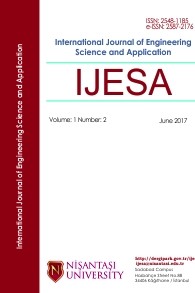Array Technique to Calculate the Breakpoints on Root Locus Graph and Related Gains
Array Technique to Calculate the Breakpoints on Root Locus Graph and Related Gains
Array method for Break points calculation, Breakaway polynomial Breakaway points' calculation, Breakin points'calculation,
___
- [1] Evans, W.R. “Graphical Analysis of Control System”, AIEE Transactions, vol. 67, pp. 547-551. 1948.
- [2] Evans, W.R., “Control System Synthesis and Root Locus Method”, AIEE Transactions, vol. 69, pp. 66-69, 1950.
- [3] Benjamin C. Kuo, “Automatic Control Systems”, Prentice Hall, 3rd Edition, 1975.
- [4] Richard C. Dorf, Robert H. Bishop, “Modern Control Systems”, Pearson, 13th Edition, 2016.
- [5] Katsuhiko Ogata, “Modern Control Engineering”, Pearson, 5th Edition, 2010.
- [6] Hassan Shibly, Orwah H. Shibly, “Formulation Method for Root Locus Calculation of Breakaway and Break-in Points and the Corresponding Gain”, Advances in Systems Science and Applications, ASSA journal, Vol 21 No 1, 2021-03-31.
- [7] Norman Nise, “Control Systems Engineering”, 7th Edition, 2015.
- [8] Remec M. J., “Saddle-Points of a Complete Root Locus and an Algorithm for Their Easy Location in the Complex Frequency Plane”, Proc. Natl. Electronics Conference, V. 21, pp 605-608, 1965.
- [9] Franklin, G. F.; Powell, J.D.; Emami-Naeini, A., “Feedback Control of Dynamic Systems, 2nd Edition, Addison-Wesley, 1991.
- [10] Krishnan V. “Semi-Analytic Approach to Root Locus”, IEEE Transaction, Automatic Control, V. AC-11, pp102-108, 1966.
- [11] Fitzgerald R.J., “Finding Root Locus Breakaway Points with the Spirule”, IEEE Transaction, Automatic Control, V. AC-11, pp 628-629, 1966.
- ISSN: 2548-1185
- Başlangıç: 2016
- Yayıncı: Nişantaşı Üniversitesi
Reviewing Domestic and Mineral Wastes as Soil Stabilizers
Farah AL-NAJE, Abbas AL-TAİE, Alaa ABED
DESIGN AND FABRICATION OF SOLAR DRYER FOR HIGH POTENTIAL AGRO-PRODUCE IN MIDWEST REGION OF NIGERIA
Harrison ITOJE, Martins OSİKHUEMHE, Peter AKHATOR, Bashir MUSA
Array Technique to Calculate the Breakpoints on Root Locus Graph and Related Gains
